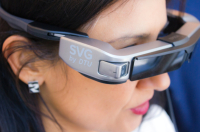Why do we love to be scared? Some of the main chemicals that contribute to the “fight or flight” response are also involved in other positive emotional states, such as happiness and excitement, the Independent reports. It makes sense that the high arousal state we experience during a scare may also be experienced in a more positive light. But what makes the difference between getting a “rush” and feeling completely terrorized?
Two parts of brain communicate during sleep, make memories. Using an innovative "NeuroGrid" technology, scientists showed that sleep boosts communication between two brain regions whose connection is critical for the formation of memories. The team was surprised to find that the ripples in the association neocortex and hippocampus occurred at the same time, suggesting the two regions were communicating as the rats slept. Because the association neocortex is thought to be a storage location for memories, the researchers theorized that this neural dialogue could help the brain retain information.
Making glass invisible. Researchers at the U.S. Center for Functional Nanomaterials have demonstrated a method for reducing the surface reflections from glass surfaces to nearly zero by etching tiny nanoscale features into them. This "invisible glass" could do more than improve the user experience for consumer electronic displays. It could enhance the energy-conversion efficiency of solar cells by minimizing the amount of sunlight lost to refection. It could also be a promising alternative to the damage-prone antireflective coatings conventionally used in lasers that emit powerful pulses of light, such as those applied to the manufacture of medical devices and aerospace components.
3D printing doubles the strength of stainless steel. Beyond plastics and porous steel, researchers have come up with a way to 3D print tough and flexible stainless steel, an advance that could lead to faster and cheaper ways to make everything from rocket engines to parts for nuclear reactors and oil rigs, Science reports. The setup starts with a powdery layer of metal alloy particles laid on a flat surface. A computer-controlled, high-powered laser beam then advances back and forth across the surface. Particles hit by the laser melt and fuse together. The surface then drops down a step, another layer of powder is added, and the laser heating process repeats, binding the newly melted material to the layer below. By repeating this tier-by-tier addition, engineers can build complex shapes, such as rocket engines.
New tech for fast-charging electric car batteries. An international team of researchers, affiliated with UNIST has presented a novel hydrogen isotope separation system based on a porous metal organic framework (MOF). The isolation of deuterium from a physico-chemically almost identical isotopic mixture has been a seminal challenge in modern separation technology. This MOF system, meanwhile, could efficiently separate and store deuterium inside the pores, exhibiting the highest selectivity of any system to date.




